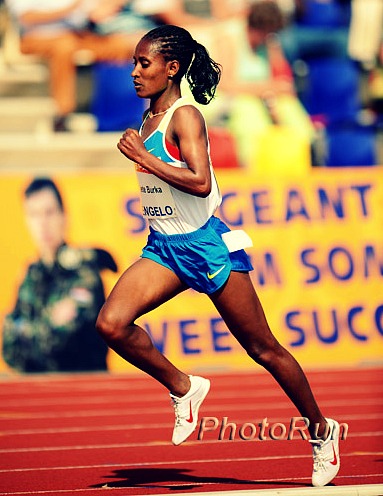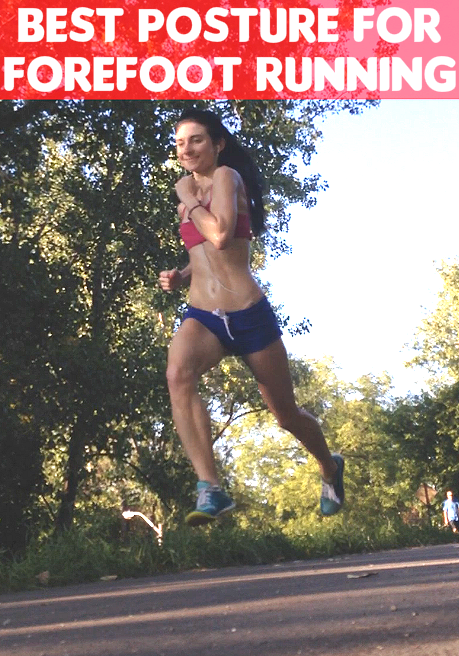In recent years researchers have come to understand that knee pain and poor performance occurs in parallel with an upright body posture during running.
An upright body posture is used when walking, but is not applicable to forefoot running.
Best Posture for Forefoot Running
An upright body posture triggers a self-perpetuating destructive cascade in biomechanics during running. For one, a runner will have difficulty breathing if their posture is too upright.
- To run with an upright body posture, the shoulders lift up and pull back which pulls the chest bone up, contracts the throat muscles and tenses the jaw.
- The result, restricted air flow.
According to this view, an upright body posture drains energy because the back muscles are being overly used to keep the body from falling during running. A runner must also drive the swing leg farther in front of the body if their trunk is too upright. This increases the horizontal distance between the center of mass and initial foot strike position and has implications to poor performance and injury.
The Simple Fix: Tilt Forward
Relax the muscles in your upper back while you run and forget about running upright. The goal is to keep your head/trunk from falling behind initial foot strike position.
To make a significant difference, Pose Running recommends falling forward by leaning at the ankles which in turn, reduces stride length by inhibiting the urge to drive the swing leg forward.
How much lean should you use?
Overleaning will misalign everything and overwork the quads.
Adjust your lean based on your sweet spot –when your foot/ground interactions feel fluid and pliable. Conversely, your posture is too upright when movements feel rigid and stiff and the ground feels hard.
- A study by Arendse et al. found that leaning forward in the above posture during running, thereby allowing the body to fall forward, provided relief to runners with knee pain.
Additional tips from the study:

- to initiate movement, tilt weight forward, lift supporting foot by softly bending (flexing) the knee
- avoid pushing away with the foot from the ground
- angle of forward lean is self-selected — whatever feels comfortable for you
- your center of mass is a forward travelling system meanwhile the legs are always trying to catch up
- never extend your knees. Always keep both knees softly bent/flexed
Leaning forward will have a remarkable promise in helping you run effortlessly as it reduces vertical impact, helping you overcome runners knee, also.
More From Run Forefoot:
References:
Arendse et al. Reduced eccentric loading of the knee with the pose running method. Med Sci Sports Exerc, 2004; DOI: 10.1249/01.MSS.0000113684.61351.B0
Comereski JS and Niedzielski M. The effects of posture on running performance: a case study. AMMA J, 2004; 17(1):8-10.
Bretta Riches
BSc Neurobiology; MSc Biomechanics candidate, ultra minimalist runner & founder of RunForefoot. I was a heel striker, always injured. I was inspired by the great Tirunesh Dibaba to try forefoot running. Now, I'm injury free. This is why I launched Run Forefoot, to advocate the health & performance benefits of forefoot running and to raise awareness on the dangers of heel striking, because the world needs to know.
Latest posts by Bretta Riches (see all)
- Can You Run In Barefoot Shoes? Yes, But DON’T Heel Strike! - 21/07/2024
- Why Cushioned Running Shoes Are Really Bad for Your Feet - 19/07/2024
- Do Cushioned Running Shoes Cause Injuries? - 17/07/2024


g4jpw5
bilzql
gv6s3t
c31ro6
ptrefr
bvqtok
wzf0b5